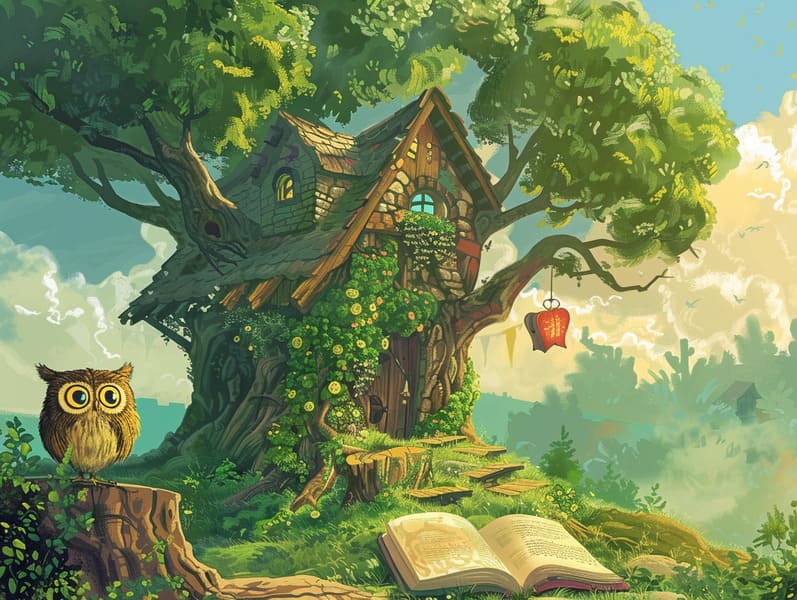The Dawn of Fairy Tales for Kids with Their Ageless Attraction.
The Dawn of Fairy Tales for Kids with Their Ageless Attraction.
Blog Article

Popular fairy tales have historical significance. These narratives have been passed down from one generation to the next well before they were ever recorded. They emerged from a variety of traditions, including Middle Eastern traditions. They were initially conveyed among grown-ups, often carrying themes and messages relevant to the societal norms and beliefs of the time.
Jacob and Wilhelm Grimm, Jacob and Wilhelm (the Grimm brothers), were among the first to collect and release many of these beloved fairy tales. Their anthology, "Grimm's Children's Stories," included classics like "The Little Glass Slipper," "Hansel and Grethel," and "The True Story of Snow White," which have since become cornerstones in the world of beloved fairy tales. Similarly, Hans Andersen's fantastical fairy tales, such as "The Little Mermaid," and "The Duckling's Story," have captured hearts worldwide, securing their place in the pantheon of classic fairy tales.
Despite their ancient origins, these tales remain as relevant as ever, especially as children's bedtime stories. These fantastical tales are now available in different formats, including vibrantly illustrated books, fantastical animations, and internet fairy tales.
Their enduring popularity can be connected to several magical reasons:
Life Lessons: Classic fairy tales often offer important moral lessons. Narratives like "The Shepherd Boy and the Wolf" teach the merit of truth, while "The Race of the Tortoise and the Hare" point out the virtues of persistence and unpretentiousness. These narratives offer young ones clear distinctions between moral and immoral, guiding their moral compass in a soft yet meaningful way.
Warmth and Understanding: Ancient fairy tales frequently include heroes facing problems and hurdles, urging kids to connect with their struggles and applaud their triumphs. For instance, "Beauty's Beast" teaches us the significance of looking past the exterior to realize the inner core of a individual, encouraging kindness and discernment.
Cultural Recognition: Many ancient fairy tales are saturated in the cultural contexts from which they came. Delving into these fairy tales can provide informative snapshots into different cultures, advancing a sense of global insight and recognition.
Imagination and Innovation: The fanciful elements in ancient fairy tales—magic wands—kindle children’s visions and dreams. These tales transport readers to supernatural realms, motivating fantasy ideas and a sense of delight that remains a lifetime.
Traditional fairy tales are not only captivating but also educational. They provide magical tools in building various cognitive and emotional skills in the young. When fairy tales are recited, they enhance verbal skills by showing new vocabulary and elaborate sentence structures. This practice also fosters listening abilities and attention span, as young readers listen intently, keen to see what happens next.
Furthermore, discussing the themes and characters of timeless fairy tales can sharpen logical thinking and logical thinking. The young are led to detect patterns, forecast, and figure out cause and effect. These conversations also further little ones convey their thoughts and feelings, boosting their emotional intelligence.
In today’s cyber age, the existence of digital storybooks has made these fairy tales more available than ever. Online platforms and software share vast collections of traditional fairy tales that can be perused or played anytime, anywhere. Fairy tales read aloud are particularly well-liked, supplying an entertaining method for little ones to appreciate these bewitching tales. Read-aloud books and read-out-loud stories guide characters and settings to life, often augmented by delightful music and songs that improve the story adventure.
The lasting appeal of ancient fairy tales lies in their ability to transform to present eras while sustaining their main lessons. Contemporary renditions of these stories often showcase more inclusive protagonists and modern settings, making them meaningful to today’s audience. However, the essential messages of guts, humanity, and integrity remain unchanged, continuing to strike a chord with young listeners of all ages.
Old fairy tales also offer a sense of contentment and homeliness. They extend a well-arranged narrative with a definite beginning, middle, and end, often winding up with the ending of conflicts and the triumph of righteousness over wickedness. This reliability can be placating for children, affording a sense of consistency in an shifting world.
Old fairy tales continue to fascinate and guide new generations, maintaining their grandeur and significance in modern society. As kids' bedtime tales, they bequeath a perfect blend of allure and teaching, check here furthering moral values, empathy, and creativity. The presence of web-based fairy tales and the sought after status of fairy tales voiced make sure that these ancient tales remain reachable to new generations.
By defending and telling these fairy tales, we continue to value the rich tapestry of folklore and cultural heritage. Whether you are reading a vividly illustrated book, viewing a online library, or listening on an voice book, the grace of ancient fairy tales is always within reach. These stories convey of the eternal nature of narratives and its ability to bond us across centuries and lands.
Whether you are accessing a colorful picture book, experiencing a web collection, or listening through an read-aloud book, the grandeur of timeless fairy tales is always within reach.
These tales teach us of the consistent nature of fairy tales and its ability to connect us across generations and cultures, making a tie that enchants and educates alike.